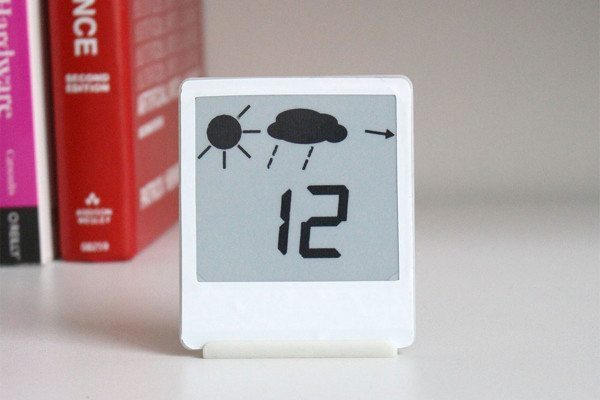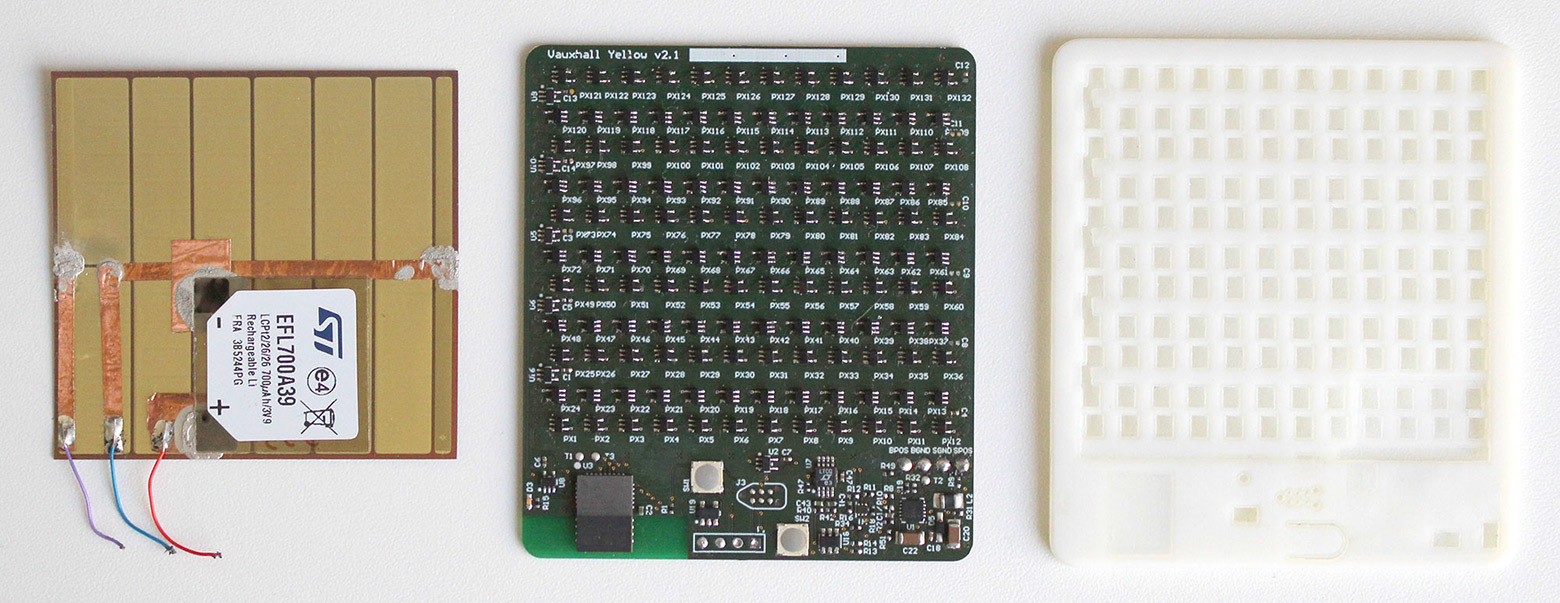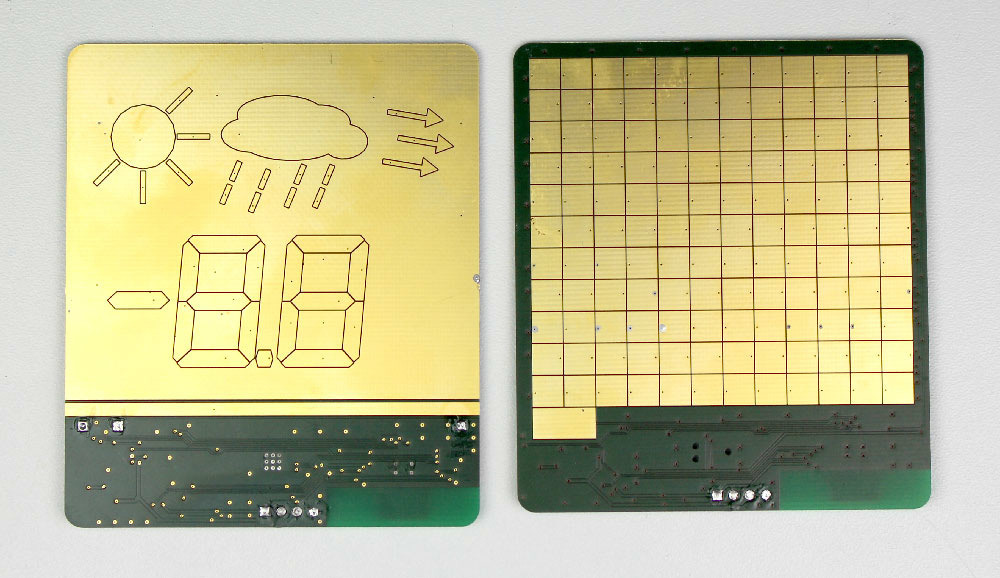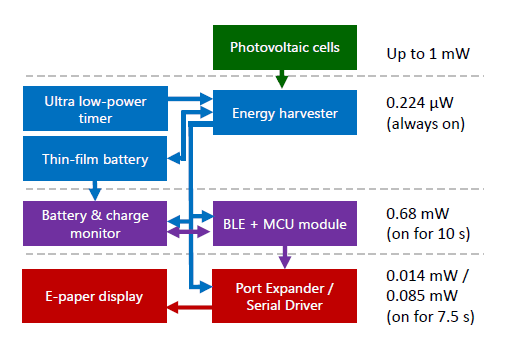The display indicator on electronic ink "lives" on solar energy and never requires recharging

One of the prototypes developed by Microsoft Research
Electronic paper (e-ink) is widely used in electronic books. Thanks to ultra-low power consumption, unpretentious black-and-white “eReaders” work for months on a single charge. The text reads better in the sun than on the most expensive tablet.
Ultra-low power consumption is a great advantage of e-paper. Maybe it can be used not only for electronic readers, but also in the production of other gadgets? After all, if you connect a conventional photocell to the display, then the device does not need external power sources for the entire lifetime. When the display is equipped with Bluetooth, it is generally excellent.
In principle, these devices can be useful as a kind of information displays embedded in the environment. Such "situational" devices are really convenient in many areas. For example, as diaries and "reminders" about the events, instead of the yellow Post-it stickers on the monitor or on the wall.
')
A small display on the wall next to the table is ready to constantly display relevant information from the Internet - for example, to report on the air temperature outside the window or remind you about the current balance of your savings account. It perfectly performs the function of an informer, shows important information from server logs. For example, the number of users online or current statistics. Only often can not be updated, but it is not always required.

Another prototype
It would seem that the technology is well studied, mastered. Demand for such devices definitely exists. For some reason, even in the richest Chinese stores, such devices are poorly represented or not represented at all. Why is that? Unclear.
Probably, there is some problem with the convenience of interfaces. Designers can not guess the tastes of people, to develop such devices that best fit into the interior and meet the needs of users. To gadgets were comfortable and beautiful. To the aid of the Chinese in solving this problem came engineers from the research division of Microsoft Research. They conducted a considerable research work - and published a report with examples of prototypes of convenient situational displays made on electronic ink technology, with photocells and Bluetooth receivers.
According to engineers, it is this combination may represent a promising opportunity for mass production. This is a small display, a photocell for extracting energy from the environment (ambient lighting in an office or residential area) and a communication module based on Bluetooth Low Energy (BLE).
The hardware device of this device is shown in the photo. A photocell with an attached thin-film lithium-polymer battery (left), a low-resolution display on a conventional printed circuit board (center) and a plastic cover that holds the elements together (right). The cover is printed on a 3D printer.

Pixels displaylers from Microsoft are as follows.

As the tests showed, the prototype charge is enough to do one operation (downloading content + updating the screen) every 25 minutes in artificial light or every minute in natural light.
Perhaps these figures will improve if you use better photovoltaic cells and more economical electronics. Modern solar cells are capable of generating up to 100 µW / cm 2 indoors and up to 100,000 µW / cm 2 under direct sunlight. Due to the loss of conversion, the actual electrogeneration in existing devices ranges from 1 to 20 μW / cm 2 indoors to 1100 μW / cm 2 outdoors. Microsoft engineers failed to achieve record numbers, so their prototypes give 0.7 mW / cm 2 on the table in the room and 8 mW / cm 2 , being attached to the glass. In principle, this is not so little. Some other devices with photocells generate even less flux per square centimeter.
The architecture of the prototype is shown in the block diagram, with the power of electric current between all modules.

Apparently, this is the first time that background lighting in a room is used as the only source of energy to power a computer display. Previously, photovoltaic cells were used only for more highly functional devices. Prototypes of devices from Microsoft are still in the early development stage, nothing is reported about the prospects of commercial production.
In addition to photons, there are many other potential sources of energy in the surrounding space. For example, the human body generates heat, electricity and kinetic energy. In addition, these are the vibrations of glass, walls and floors, the energy of radio waves (of their own and neighboring WiFi routers), sound waves, air currents, etc. All this can be collected and used in low-power electronic devices, including various types of sensors. "Eternal" devices without external power supply are ideal for installing a hidden listening, if it is not possible to mount a "bug" in an installed electrical device.
If Microsoft's display devices are cheap enough, they can really be used everywhere as interactive Post-it stickers. The demo video shows a program for communicating with “stickers” via Bluetooth from a tablet or smartphone.
The report is published in the public domain (doi: 10.1145 / 2984511.2984513).
Source: https://habr.com/ru/post/369793/
All Articles